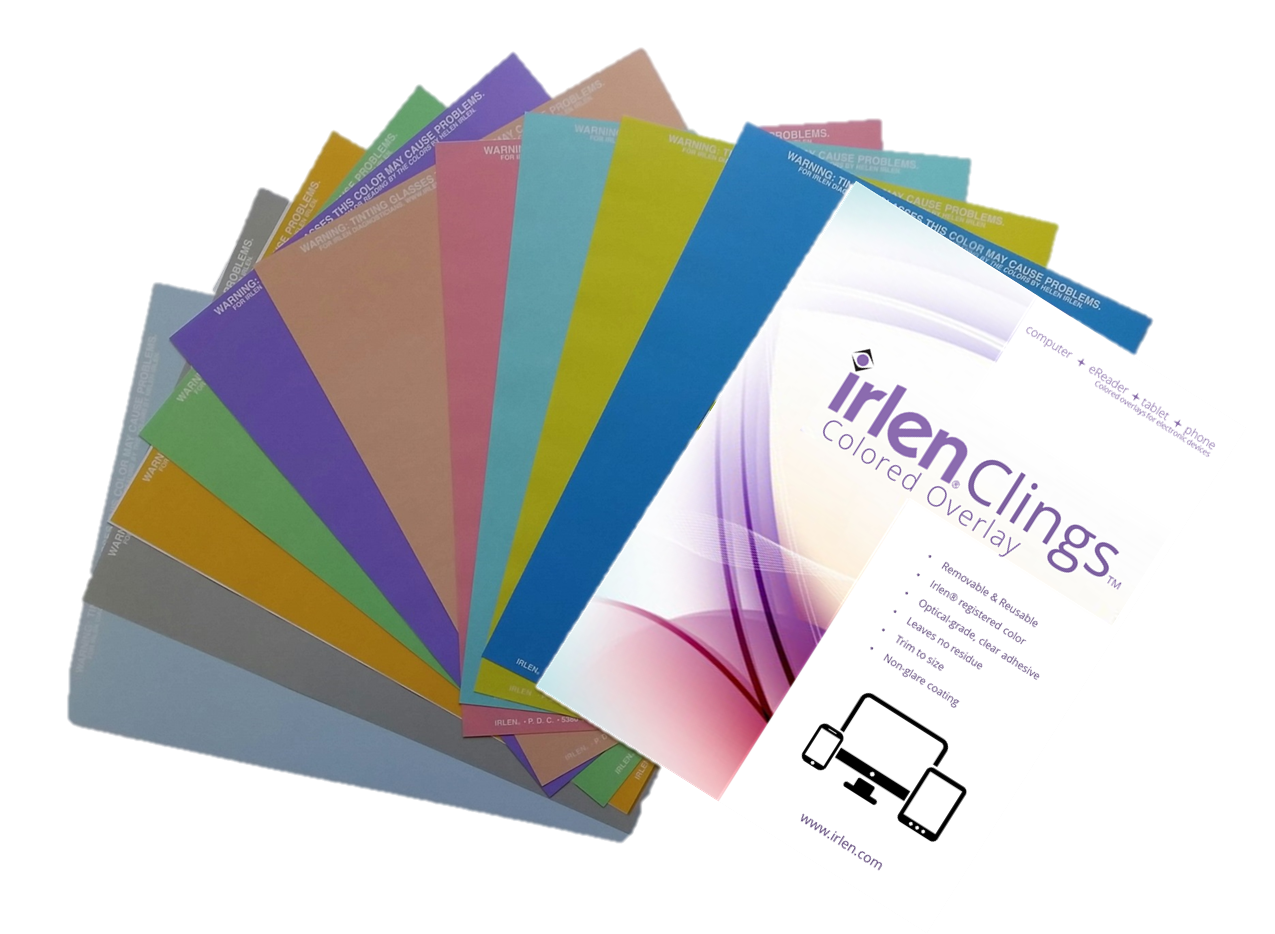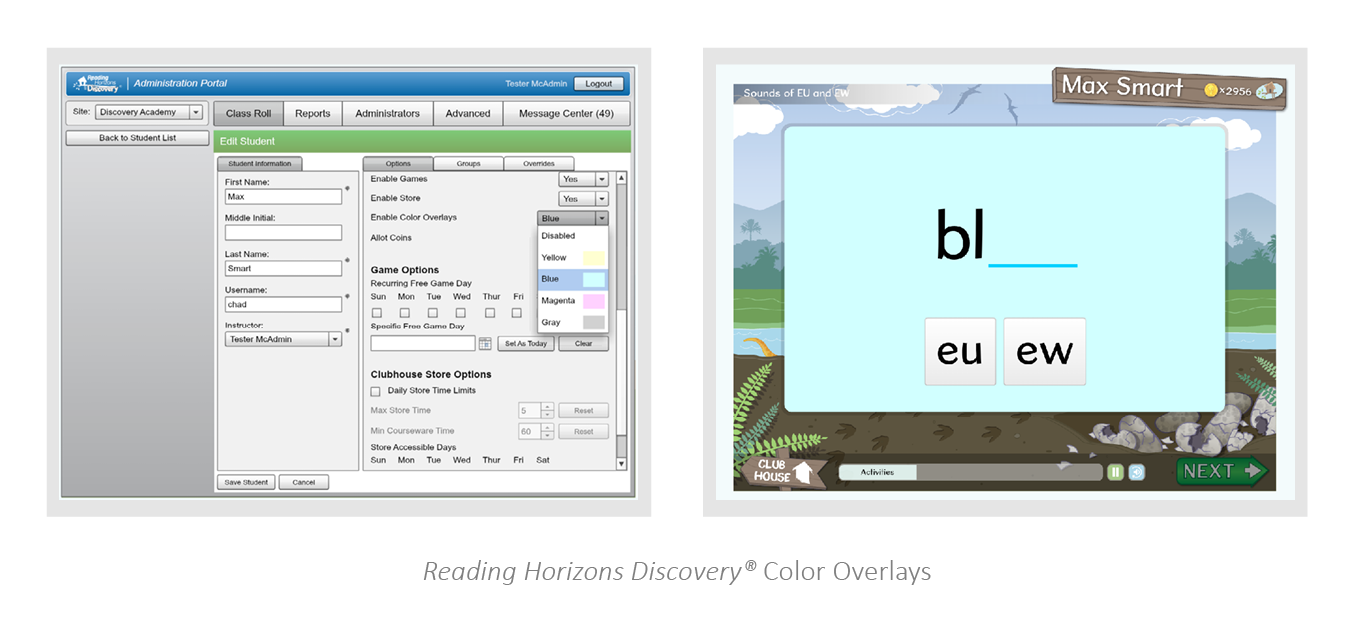Irlen Syndrome: A Surprisingly Common Cause of Reading Problems
 As a former special education teacher working with students from kindergarten to 12th grade, I spent a great deal of time attempting to stay current with educational research and best practices. My objective in staying informed and up-to-date was to learn as much as I could to assist my students and serve as a resource for their parents. In addition to grad school, I attended a number of professional development workshops on a variety of topics including dyslexia, attention deficit, and Autism Spectrum Disorders to help me reach my objective.
As a former special education teacher working with students from kindergarten to 12th grade, I spent a great deal of time attempting to stay current with educational research and best practices. My objective in staying informed and up-to-date was to learn as much as I could to assist my students and serve as a resource for their parents. In addition to grad school, I attended a number of professional development workshops on a variety of topics including dyslexia, attention deficit, and Autism Spectrum Disorders to help me reach my objective.
Imagine my surprise when one of the other students in my master’s program, who was an assistant principal, introduced me to something called Irlen Syndrome. For her and nearly 12% of the general population, words, numbers, and even musical notes look like optical illusions, and physical symptoms like headaches or tiredness occur after reading or attempting to read. She described her symptoms and the very simple fixes that had made a difference for her.
What is Irlen Syndrome?
Wait a minute! What was Irlen Syndrome and why had I never heard of it? I began to do some investigating. I discovered that Irlen Syndrome is a visual processing disorder that often leads to academic difficulties, inattention, and physical symptoms. In other words, the brain cannot accurately process and understand visual information, resulting in an array of problems. Research shows an astounding 46% of people with reading problems or learning disabilities have Irlen Syndrome, either in isolation or in combination with other academic difficulties. Without the ability to accurately comprehend visual information, students with Irlen Syndrome often struggle with reading.
Unfortunately, school environments can trigger and aggravate the disorder. Symptoms most often occur with bright or fluorescent lighting and with text that is small, crowded on a page, or printed with a high contrast between black print and white paper. Those are the things that my students were trying to deal with in every class—bright lights, small, crowded text, and white paper.
Symptoms can occur when students are reading from printed materials, but they can also be triggered when students are reading material on electronic devices, making the trend to more computerized learning problematic for some students.
Awareness is an important first step for educators to be able to help students with Irlen Syndrome. Understanding the reasons behind student complaints of headaches and hurting eyes, or realizing that a student always puts his or her head down during reading, can be essential to identifying the disorder.
Solutions for Irlen Syndrome
Irlen Syndrome was discovered by Helen Irlen over 30 years ago. Irlen, a former school psychologist, adult learning disability specialist, and child and family therapist has made it her mission to increase research and awareness of the disorder. The goal of her work is to ensure that those affected by Irlen Syndrome aren’t limited by it. “With more awareness and diagnosis early on, we could help suffering readers by relieving their symptoms and increasing their interest in and ability to learn to read with fluency and comprehension,” stated Irlen. “Learning to identify these children is quick, easy, and can be done by adding a few questions to the intervention screening process. Best of all, the solution is cost effective.”
Approximately 33% of individuals with learning disabilities can be helped using Irlen Spectral Filters, which are colored overlays or colored spectral filters worn as glasses. Upon their use, print clarity, stability, and reading comfort instantly improve. Seeing the world through a colored lens helps Irlen sufferers process visual information without distortions, allowing them to read for longer periods of time and without physical symptoms.

Adjusting classroom environments for students and incorporating just a few modifications may help all students, not just those with Irlen Syndrome. For example, reducing the number of fluorescent bulbs or using floor lamps in classrooms, choosing recycled or colored paper instead of bright white, and using larger, easy-to-read fonts are just a few of the low-cost fixes available for educators.
Eventually, my curiosity about the disorder led me to become a certified Irlen screener, and I was able to screen a number of students at my school and their parents. One family really stands out.
A mother requested a dyslexia screening for her 10th-grade son who was having reading difficulties. During the screening, it became apparent that this young man had moderate symptoms of Irlen Syndrome, which were significantly reduced by using a colored overlay and colored paper for assignments and assessments, and limiting bright light.
The real surprise came when the mother acknowledged that she, too, had all of the symptoms. She described years of severe difficulties with bright light, driving at night (due to glare), and reading. She had vivid memories of third grade when she was placed in the group for slow readers because she was unable to keep her eyes on the words. When we completed the screening and she saw the difference an overlay could make, she cried. She had always loved books, she said, and could never understand why she was unable to complete even short novels. She felt robbed of so many opportunities and decided that she was going to make up for lost time. When I last spoke with her, she related that she has enjoyed almost a decade of reading fluently and comfortably using an overlay and an e-reader.
When I was introduced to the Reading Horizons method, I was thrilled that the Reading Horizons Discovery and Elevate Software provided the option for overlays. As an education specialist now working for Reading Horizons and helping to develop the elementary reading curriculum and reading intervention program for children and adults, I believe that it is important for us to identify issues preventing reading success. It is also important to share this information with educators and parents in order to create the best learning environments for all students.

Watch this video to learn more about Irlen Syndrome:
2 Comments

Susan Carter said
I wish you could present this free webinar during an evening hour as well. I teach school and will actually be in trainings all that afternoon. If I find that the trainings end early that day, such as just before the webinar, will I be able to register for it then? Also, please let me know if you might consider a second showing during one evening. If not, is there a way that I can "record" this webinar and watch it at a different time? I am a reading specialist and a trained reading recovery teacher, along with being a senior Irlen screener. I am fortunate enough to work in an elementary school that allows me to screen students. In fact, they call me in to screen students, which is rare for administration to do, but they understand and believe in its ability, and mine as well, to improve the success of the struggling reader. Our mantra is that we want to do what is best for the student, not what is convenient for us, the staff. I am interested in learning more about Reading Horizons and any other information that will lead to the success of my students. Anything that Helen Irlen endorses must be very effective. Thank you for your time and your investment in sharing this information with others.
Susan Carter

admin said
@Susan the webinar can be viewed at anytime at the link above!